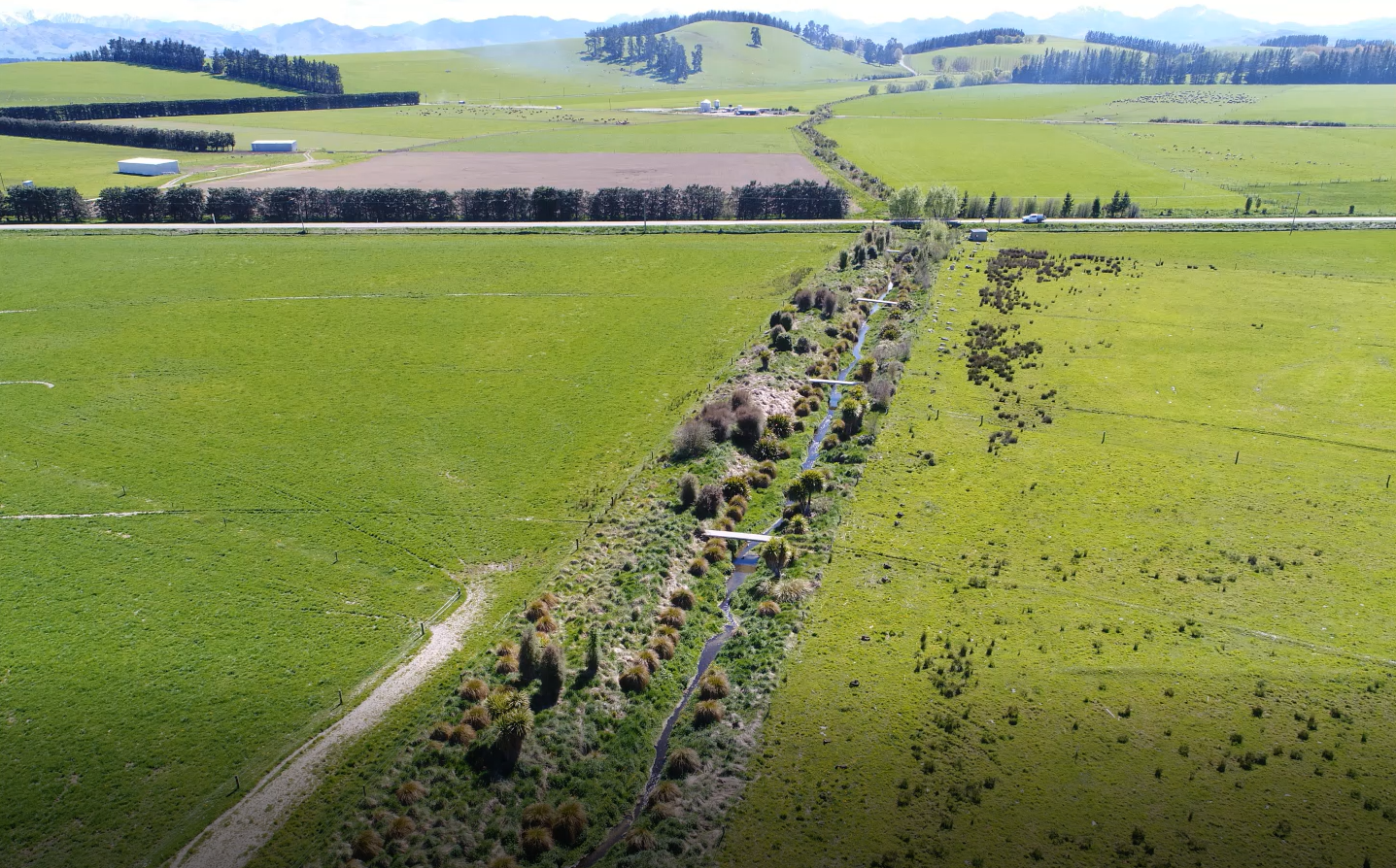Environmental Management
AIC has a leading role in achieving the water quality objectives of the Hurunui and Waiau Regional River Plan (HWRRP). We need to continue to adapt and farm in a way that protects our environment. It’s a big responsibility, but it’s also an opportunity.
We work in close partnership with Environment Canterbury, industry organisations, community groups, and most importantly, the irrigated and dry land landowners and farmers of the Hurunui and Waiau catchments to help achieve our shared objectives. AIC’s Irrigation Scheme and Environmental Management Plan received full approval from Environment Canterbury in July 2015 and was updated in 2018, 2021 and 2022. A central consideration of our Strategy is a desire to seek sustainable outcomes that can deliver both environmental gains and production efficiencies through better management and more efficient resource use. This in turn helps agriculture remain productive, profitable and a major contributor to the economic and social development of the Amuri area.
-
The AIC Environmental Collective was established in early 2013. All AIC shareholders and most large independent irrigating farms within the Amuri, Hawarden and Hanmer Springs areas are members. The purpose of the Collective is to assist shareholders, local irrigators, and Low Intensity Dryland Farmers to meet consent conditions or requirements in the Hurunui Waiau River Regional Plan (HWRRP). The Collective has an Environmental Management Strategy (EMS) which is reviewed and approved by Environment Canterbury.
Farmers who are not shareholders can apply to join the Collective to meet their requirements under the HWRRP or their resource consent requirements. All farms that are part of the Collective must have a Farm Environment Plan (FEP) in place within six months of joining the Collective and the FEPs must be independently audited within three years of joining.
-
The subcommittee is a delegated and member approved group operating to independently manage the Farm Environment Plan (FEP) audit programme. The committee was established as a mechanism to implement and govern the Environmental Management Strategy, as set out in AIC’s Irrigation Scheme Management Plan. The Subcommittee also has responsibility for the resolution of disputes and compliance issues relating to FEPs and FEP audits and the reporting of outcomes to the AIC Board, Environment Canterbury and the wider community.
The current members are James McCone (Chair), David Croft, Emlyn Francis, Mike Satterthwaite, Scott Anderson (Independent Waiau Representative), and Dave Hislop (Independent Hurunui Representative).
-
Farm Environment Plan audit results for the 22/23 season are in. View the Results Report here.
-
We are committed to investing in projects to reduce nutrient losses and improve water quality.
As part of our long term commitment to the Amuri Basin, we have a number of workstreams underway to enhance our understanding of catchment hydrology to ultimately improve water quality. The current focus for the water quality and hydrology work programme is on data consolidation and monitoring. Visit www.aicprojects.nz to learn more.

DRY CREEK, THE TRIANGLE, BALMORAL

WINTER GRAZING, MARBLE POINT STATION

SUNFLOWERS, COLDSTREAM DAIRY

ST LEONARD'S DRAIN, GREEN VALLEY
